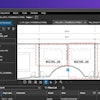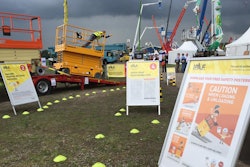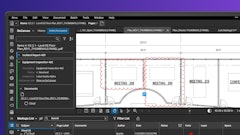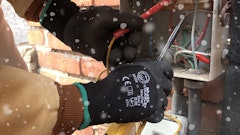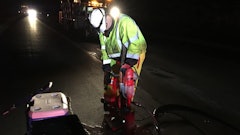
By Kevin Cheng, product strategist at PlanGrid
Heavy civil projects can become increasingly complicated to manage, particularly when the number of workers on the jobsite grows as the project becomes greater in scope and scale. Communication becomes more difficult with teams spread out across large distances, and unexpected changes in field conditions create hurdles that put GCs’ organizational skills and their ability to quickly adapt to the test.
Contractors who haven’t taken the necessary steps to establish processes or streamline communication ahead of time will find trials more daunting than they should once the job starts — especially when it comes to reaching agreement with a project’s owner and getting paid.
GCs can reduce frustrations and improve their relationship with project owners by tackling three main areas.
Reaching a work in place agreement
One of the most contentious dynamics between a GC and owner arises when the two disagree about a project’s level of completion. These disagreements impact a GC’s ability to get paid, a project’s cash flow and ultimately, its finishing schedule. Most disagreements about work in place can be prevented by setting a clear standard and processes from the beginning of the project.
Most importantly, GCs and owners should agree on exact levels of completion. GCs can tackle this process by portioning out and clearly marking the work to be done. For example, work can be deemed complete based on specific quantities of concrete poured or individual structures built to completion, instead of waiting until the entire project is finished. Be as specific and quantify as much as possible – use mile marketers, linear feet of installed pipe, asphalt tonnage. Then identify specific percentages of completion, whether that’s 25% versus 50% completion. In addition to being as specific as possible, it’s also crucial to have the owner agree to these terms of completion prior to starting work. Organized GCs will include exacting units of measurement and an accurate timeline of their work.
Once the project is underway, communication about reaching these specific levels is vital. Owners should be advised of any setbacks or delays, as well as changes in which the project can come in ahead of schedule. A workflow that allows all stakeholders to collaborate and communicate on timelines, notes, blueprints and other documents that are relevant to a project’s status can further streamline communication. Photos of progress and challenge areas can also offer owners a first-hand view without having to visit the jobsite. Alternatively, arrange for an inspector to be onsite during installation to verify and communicate the work in place back to the owner. By agreeing upon work in place specifics prior to starting a project, disagreements can be avoided once the digging begins.
Resolving inspector availability issues
Depending on availability and agreements already in place, it can take up to 24 hours for an inspector to arrive at the jobsite to conduct an inspection. Waiting for the inspector can lead to unexpected delays and cost unprepared GCs time and money. By anticipating this potential “hurry and wait” hurdle, GCs can prevent losses and keep projects running on time.
Starting with inspector agreements, GCs can safeguard against delays and keep their relationship with owners in good standing. If a contractor knows the timeline of their project is variable, they might think about putting provisions into their inspector agreement that requires an inspector to be available on less than 24 hours’ notice. GCs can also forestall inspector availability problems by maintaining third-party quality control personnel onsite. In cases where inspectors are not available in time windows that are optimal to keep the project on schedule, onsite third-party quality control personnel can perform inspections and allow the project to move forward. GCs should also supplement these quality control inspections with GPS-tagged photos and meticulous documentation whenever possible.
One caveat: the ability to move forward without an inspector depends on agreements reached with project owners. Some owners may only want inspectors, not quality control personnel, to perform inspections. In those cases, GCs should stick to their prearranged agreements and wait for inspectors to arrive — but account for this potential delay within their project schedule.
Anticipating field changes
Even for the most prepared GCs, unanticipated field changes can arise on the jobsite. It is unlikely the field, whether soil conditions, drainage or plant growth, will be the same when the job is underway as when the GC originally bid on the project. For example, utilities may not be in the same location on site as where they are marked on plans — but owners may still push back on change orders, especially if they don’t fit within the original contract or budget.
The best way for GCs to overcome field changes is to identify them before they begin building, a step frequently overlooked. Schedule experts to visit the site and inspect for possible seismic, geological or soil issues. The necessity of experts you turn to will depend on the area’s conditions. Based on their findings, you can then alert owners to any issues and alter plans more easily before beginning to build.
If GCs do run into unforeseen field changes after the job has begun, they need to document everything and escalate the problem as quickly as possible. Sometimes owners may not understand the severity of an issue, so GCs should include visual comparisons in the form of photos and plan mark-ups. An organized workflow is key to collaborating on issues with all stakeholders, and sharing details about issues as they happen will decrease tensions with owners and speed up change orders to keep projects on time
While a natural tension can exist between GCs and owners, disagreements that stall a project and lead to frustrations on the part of both parties can be easily avoided with clear communication ahead of time, especially around reaching a work in place agreement and inspector availability, and making sure to investigate potential field changes before breaking ground.
Kevin Cheng is a Product Strategist at PlanGrid, with almost 15 years of construction industry experience. Prior to PlanGrid, Kevin managed new work, proposals, preconstruction, budgeting and project estimation as a Senior Project Manager at Level 10 Construction for five years, and a Senior Project Engineer at Rudolph and Sletten for almost eight years. Kevin is passionate about creating products that truly add long-term value for the construction industry. He holds both Masters of Science and Bachelor of Science in Civil & Environmental Engineering from University of California, Berkeley.



